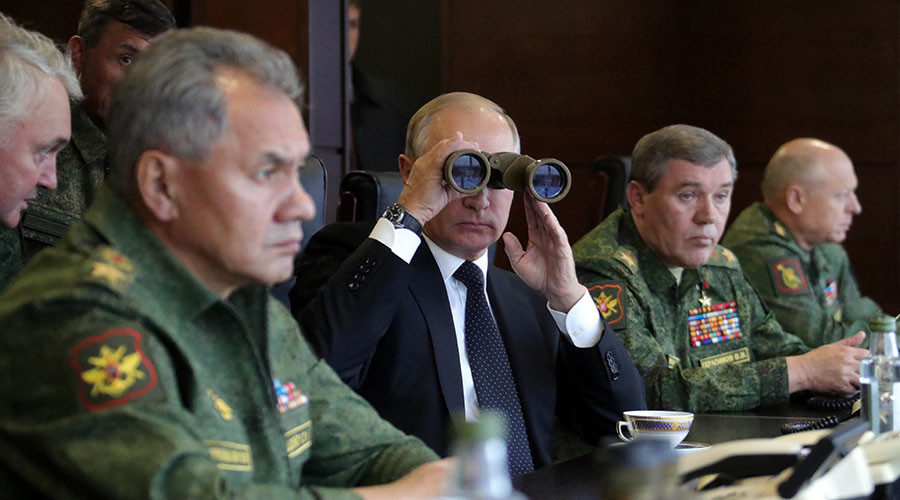
Some of these resignations have already since taken place. On September 27th, reports surfaced - with no official confirmation as of yet - that the head of the Krasnoyarsk territory, which makes up an enormous part of the Siberian region (more than 2,366,000 square kilometers) and is rich in natural resources, had resigned along with the head of the Nenets Autonomous Okrug (a region in the European part of Russia).
Back on September 26th, moreover, the governor of the Nizhny Novgorod region and the Yeltsin-era beneficiary, Shantsev, had been dismissed. As has been reported, dismissals are also in the works in not only Russia's regions, but also in the national republics. For those who are unfamiliar with the Russian state system, the structure of national and administrative-territorial policy encompasses both "Russian" regions and territories and those national republics and districts which the contemporary Russian Federation inherited from the USSR.
More worthy of our focus, however, is the widely-discussed news of the resignation of the head of the Republic of Dagestan, Ramazan Abdulatipov, who announced his resignation during a live interview with Govorit Moskva ("Moscow Speaks") radio. The very next day, September 28th, the Russian press featured articles discussing the most probable candidates for the region's head post. Again, however, no official report confirming Abdulatipov's resignation has appeared yet.
Indeed, it cannot entirely be ruled out these are pieces of "fake news" to which some otherwise serious specialists on the North Caucasus' political elite are so prone. The complexity of the situation in Dagestan is exacerbated by the existence of multiple ethno-religious and ethno-political problems, as Dagestan is the most populous (more than three million residents) and most ethnically complex republic of the North Caucasus, featuring 14 widely used languages and a shared border with both Georgia and Azerbaijan. The northern part of the latter is inhabited by Lezgins, Avars, and a number of other ethnic groups which belong to the category of Dagestani peoples. Although no territorial claims have been officially declared on either side of the border, there are serious tensions surrounding changing the border line.
To aggravate the matter even further, Dagestan is one of the main centers of the spread of Salafism, an ideology professing a "pure" Islamic state, in the North Caucasus. A number of militants from Dagestan are fighting in the ranks of the Islamic State in Syria. While experts on Islamism have noted that Russia's law enforcement agencies have achieved significant successes in recent years in combatting the Salafist underground in the North Caucasus as a whole and the Republic of Dagestan in particular, no small part in this has been played by the departure of many Salafists to Syria to fight for ISIS. Moreover, this does not annul other problems, especially those of a socio-economic nature, which are so acute in the region.
The majority of experts nevertheless agree that Abdulatipov has not coped with the responsibility of being an effective leader in such a complex region. Thus, reports alleging that Abdulatipov has resigned have been met without much surprise.
The announced series of resignations of up to 10 regional leaders out of Russia's 85 regions is a rather radical measure, and thereby indicative of the seriousness of the intentions involved. There is no doubt that Russia's top political leadership is, in anticipation of the March 2018 presidential elections, paying heightened attention to socio-economic and ethno-political situations in the national republics and the regions, especially in such an ethno-religiously complex place as the Republic of Dagestan and such an economically vital region as Krasnoyar. The socio-economic situation and domestic political stability are probably the main (although not the only) criteria being used to assess the efficiency of the heads of these regions.
Of course, any analysis of the subject involves a much more complex evaluation. During Shantsev's governorship of the Nizhny Novgorod region, the population declined by 5.72%, or from 3,445,000 people in 2005 to 3,248,000 in 2017. Population reduction in this important region is tied not so much to the overall birth- and death-rate dynamics (the birth rate in this period actually grew by 33.71% and mortality was reduced by 23%), but more obviously to domestic migration processes and the relocation of part of the socially active population to other regions, first and foremost Moscow. But internal migration can be a criterion for judging quality of life for any region. The massive exodus of the population to other regions in the country is in fact testimony to the dissatisfaction of the population.
Of no small importance as a criterion for assessing the regional heads is, in my opinion, the unspoken corruption "rating." In today's Russia, only a certain portion of anti-corruption investigations reach the courts (such as the loud proceedings against the governors of the Kirov and Sakhalin regions and Minister Ulyukaev, etc.). Thus, we can discern a certain anti-corruption track in the unfolding and upcoming resignations.
Especially ahead of presidential elections, the federal center has no need for regional heads who are tied to trading schemes through their official positions. And if we are right in our considerations, then the unfolding series of resignations/dismissals will be large in scale and affect not only the governor level, but also more or less significant spheres of administration throughout the power vertical (ministries and departments) and horizontal (in the regions).
As far as we can see, moreover, this purge will not be restricted to mere preparations for the March 2018 presidential elections.



Reader Comments
to our Newsletter